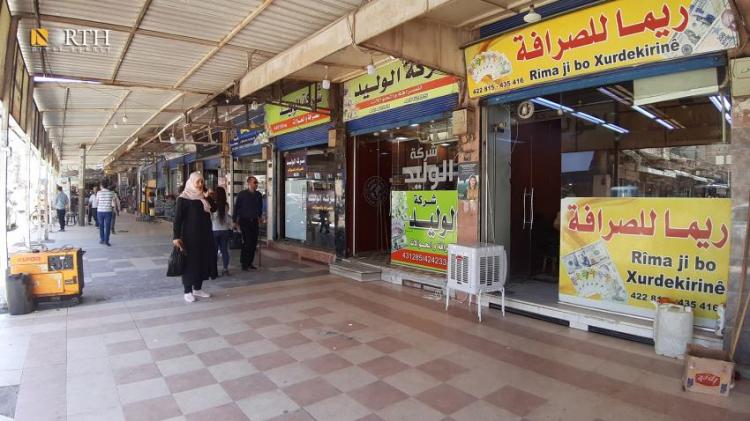QAMISHLI, Syria (North Press) – The Central Bank’s failure to control the successive collapse of the Syrian currency pushes the Syrian government to do its best to control local markets in areas out of its control to revive the deteriorating economic situation.
During the years of the crisis, the city of Qamishli, one of the largest cities in northeast Syria, turned into an important commercial center due to several factors in light of the chaos prevailing in the country.
This is due to the great activity of international and humanitarian organizations operating in the region, and the presence of a border crossing with the Kurdistan Region of Iraq (KRI) which is used for trade, in addition to the large economic resources that the region enjoys, which contributed to the large influx of foreign currencies into this market.
Economic analysts from Qamishli told North Press that all the above mentioned reasons are affecting the exchange rate of the Syrian pound.
Economic cell:
Money changers from Qamishli talked about the presence of undercover agents affiliated with the government, who are active in the market to control it, amid difficulty in controlling the market due to the use of the Syrian currency in the trading operations.
Ibrahim Haftaro, an owner of a currency exchange office in Qamishli, said that the government has a major role in manipulating the market, since the bulletin for determining the exchange rate is issued from Damascus.
He told North Press that the government has what is called “the economic cell”, and it has agents on the ground in all regions to always control the market.
“When you try to sell [exchange money], you do not know who is selling, but you see that 100 people are selling,” he added.
“Those people are unknown, most of them say that this money is their own, but it is difficult to find out about their background; those cells control buying and selling operations and have an impact on the market,” he stressed.
Haftaro indicated that the government sets the dollar exchange rates with 100 SYP differences between its areas of control and other areas, which is not a big difference, “here is the trick”.
“Traders also have a role in manipulating the market, for example, the dollar is sold at 7,400 SYP in Damascus, while in Qamishli, it is sold at 7,600 SYP. Here we know that the merchants are the main beneficiaries,” he added.
while moving into its 13th year, the conflict in Syria has inflicted an almost unimaginable degree of devastation and the Syrian economy, as the exchange rate of the Syrian currency against the dollar reached about 7,700 SYP.
The local currency continued depreciation has led to rampant inflation, eroding real wages and pushing more people into poverty, as recent UN reports confirmed that most of the people live below the poverty line.
The importance of the exchange market in Qamishli is due to the fact that it contains dozens of remittance offices that receive millions of dollars every month from residents abroad to their families in Syria, in light of the government’s ban on circulating dollars in its areas of control.
On Jan. 18, 2020, the government issued a presidential decree toughening penalties for those who deal with foreign currencies.
Late in 2022, Associated Press reported on the bankruptcy of the Central Bank of Syria, after Russia, the most prominent ally of Damascus, refused a loan request. However, the Central Bank denied these “rumors” in a statement.
How dollar sent to Damascus
According to observers of the economic affairs, the areas of the Autonomous Administration of North and East Syria deals in the Syrian currency, unlike the opposition areas, which deal in the Turkish lira, and therefore the process of withdrawing the foreign currency that is pumped into the Qamishli market is easier for the government.
According to the well-known economic system, whenever the population turns to the local currency and transfers a larger amount of foreign currency to it, its value increases and the state’s foreign currency earnings increase.
Muslim Talas, a researcher at the German Institute for Development and Sustainability, told North Press, “This mechanism is used to obtain foreign currency from AANES-held areas, meaning that the majority of people exchange the foreign currencies they receive into Syrian pounds, which are large in quantities, which means automatically that this currency will find its way to the treasury of the Central Bank sooner or later.”
The government is easily able to issue a new banknote and pump it to the Qamishli market; and manipulate the market, meaning that the market is part of the Syrian monetary system, the basis of which is dealing in the Syrian pound, which is under the control of the government, according to Talas

